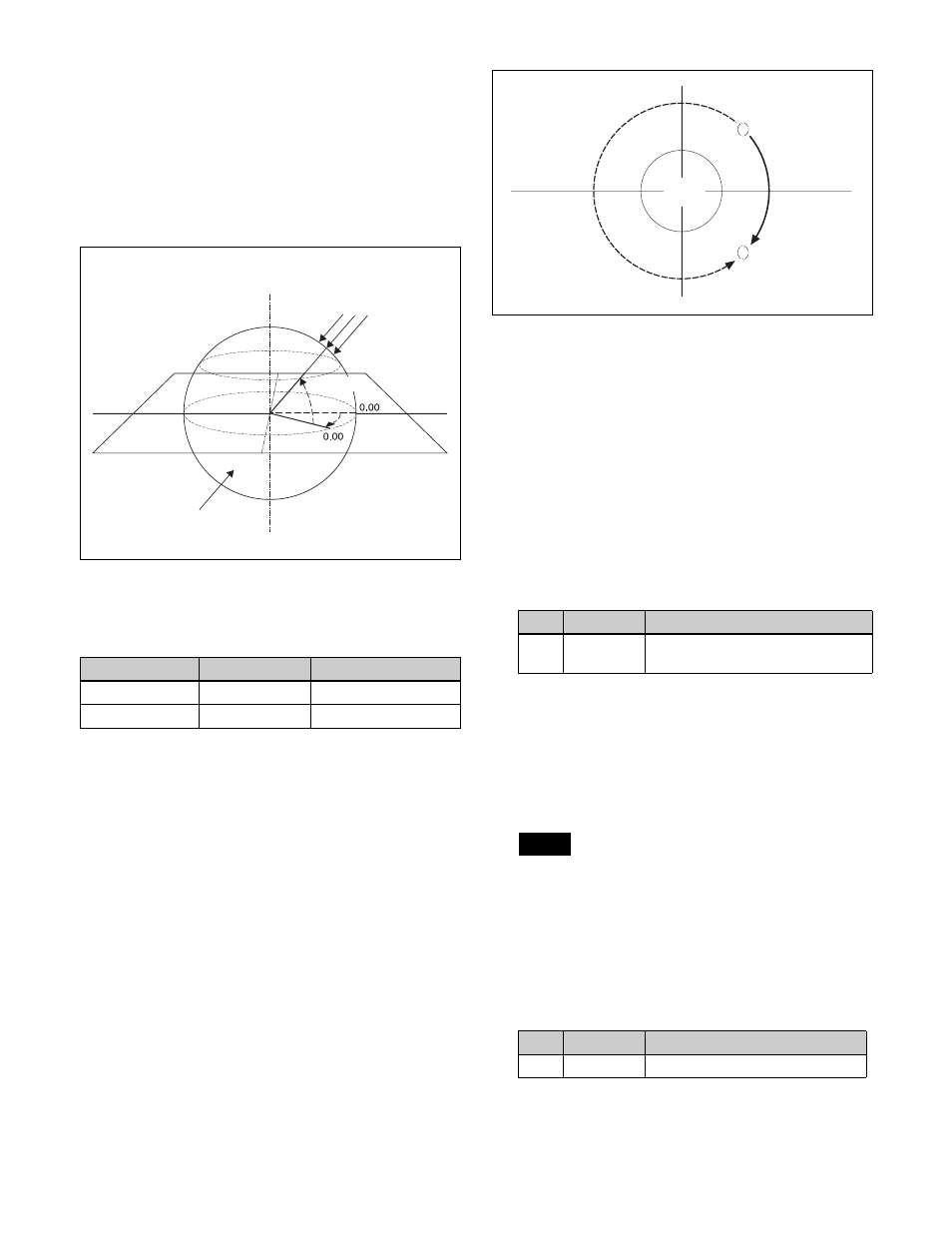Sony GP-X1EM Grip Extension User Manual
Page 270

270
The direction of the light is defined by longitude and
latitude.
• Longitude: A direction (angle), expressed as a plus value
for clockwise rotation in the plus direction with respect
to the X axis of the input picture.
• Latitude: Latitude
The following figure shows the relationship between the
longitude and latitude of parallel rays, input picture, and
test sphere.
The measurement unit of direction parameters is the number
of rotations, with 360
°
(1 rotation) expressed as 1.00.
The following relationships apply in the example shown in
the figure.
The fractional part of the setting after the decimal point
corresponds to an angle 0
°
to 360
°
. If the fractional parts
of two setting values are the same, the effect is the same
even if the integral parts are different.
The integral part of a setting value is used when moving a
light source with keyframes.
For example, when the longitude of a light source rotates in
the clockwise direction from 0.88 (315
°
) to 0.12 (45
°
), it
rotates in the counterclockwise direction (the angle grows
smaller) if the above values are used. In this case, the value
of the second keyframe can be set to 1.12 (360
°
+ 45
°
).
Setting the image surface
1
Open the DME >Light/Trail >Spot Lighting menu
(4156).
2
Press [Spot Lighting], turning it on.
3
Set the following parameter.
You can make the Spot Lighting effect more effective
by adjusting the [Total Ambient] parameter to lower
the brightness of the entire image.
The [Total Ambient] setting is common to the
Lighting function.
4
In the <Surface Select> group, select the state of the
surface struck by the light.
Flat:
The image surface is unchanged. This causes the
selected light source to appear as the effect.
Non Linear:
Spotlighting effect is applied to an area
to which a DME nonlinear effect is applied.
The Spotlighting [Non Linear] setting is effective for
the following nonlinear effects. For other effects, the
result is the same as selecting [Flat].
Wave, Mosaic Glass, Flag, Ripple, Lens, Panorama,
Page Turn, Roll.
5
When [Non Linear] is selected in step
4
, set the
following parameter.
a) Plus emphasizes bumps in texture, minus emphasizes depressions.
0.00 is a flat surface.
Parameter
Setting
Angle
Longitude
0.12
45
°
Latitude
0.12
45
°
Z-axis
Latitude=+0.25
Latitude=–0.25
Test sphere
Parallel rays
Input
picture
X-axis
Longitude
Latitude
Y-
No.
Parameter
Adjustment
1
Total
Ambient
Brightness of whole image
Note
No.
Parameter
Adjustment
5
Amp
Emphasize unevenness
a)
KF2 = 1.12
KF2 = 0.12
KF1 = 0.88
Test
sphere